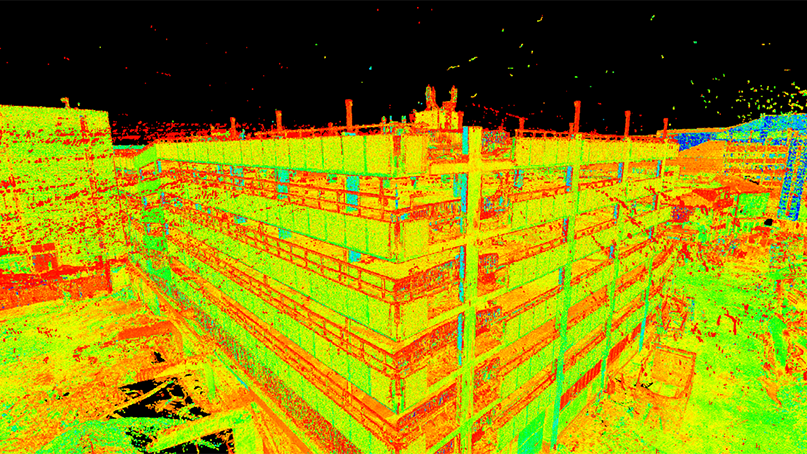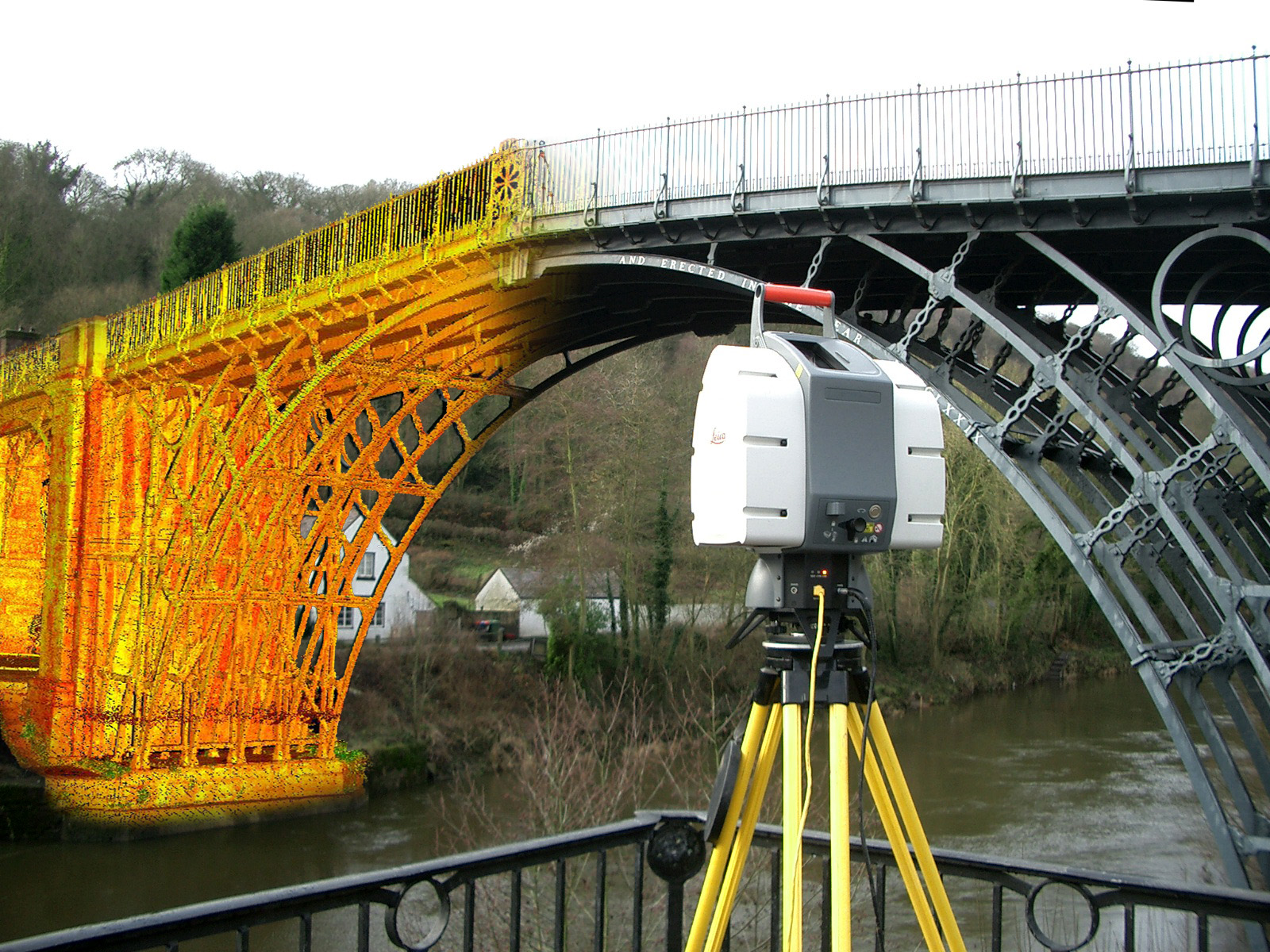Checking out the Applications of 3D Laser Scanning in Archaeology and Cultural Heritage Conservation
The combination of 3D laser scanning modern technology in archaeology and cultural heritage conservation notes a significant innovation in just how archaeological sites and artefacts are documented and analyzed. This non-invasive method offers accurate spatial data, exposing intricate information that were previously tough to catch. As the applications of this innovation remain to advance, different ramifications for paperwork, education, and preservation arise, inviting additional expedition into its transformative influence on the field.
Recognizing 3D Laser Scanning Modern Technology
3D laser scanning modern technology has actually reinvented the area of archaeology by giving detailed and precise spatial data. This advanced technology uses laser beam of lights to capture numerous data factors from an item or site, developing an extremely accurate three-dimensional depiction (3D Scanning). The resulting factor clouds can disclose elaborate details of historical sites, frameworks, and artifacts that might be unseen to the naked eye
Using this innovation, archaeologists can record the specific measurements, forms, and settings of things with unmatched precision. This technique decreases the threat of human mistake and eliminates the demand for comprehensive hand-operated dimensions. Furthermore, the information collected can be assessed and shared quickly, promoting partnership among researchers. By incorporating 3D laser scanning with GIS and various other digital tools, archaeologists boost their ability to picture and analyze historical contexts, resulting in much deeper understandings right into ancient cultures and atmospheres.
Enhancing Historical Documents
3D laser scanning considerably enhances archaeological documentation with its capacity to create accurate site maps. This technology assists in thorough artifact evaluation, offering insights that standard approaches might overlook. In addition, it ensures the conservation of contextual information, which is essential for understanding the connections within historical sites.
Precise Site Mapping
While standard mapping techniques commonly fight with recording the detailed information of historical websites, progressed laser scanning innovation supplies an advanced technique to precise site mapping. This method enables archaeologists to develop highly detailed and precise three-dimensional representations of websites, showcasing topographical variants and architectural features with amazing fidelity. The capacity to record countless data factors in a matter of minutes permits thorough documents, which can be quickly updated and shared amongst researchers. In addition, laser scanning assists in the dimension of complicated geometries that would be hard to analyze using standard devices. Consequently, this technology boosts the accuracy of site maps, adding significantly to the conservation and understanding of social heritage resources.
Thorough Artifact Evaluation
Laser scanning technology greatly boosts the analysis of historical artifacts, giving scientists with unprecedented information and precision. This technique captures complex surface area textures, measurements, and features that standard documentation methods may overlook. By creating high-resolution 3D models, scholars can very closely analyze artefacts without the risk of damage intrinsic in physical handling. This precision permits much better relative research studies, making it possible for experts to determine manufacturing strategies, stylistic variations, and possible social importance. The capacity to adjust and imagine data in 3 measurements facilitates a much deeper understanding of artifact performance and use. On the whole, laser scanning fosters a more detailed technique to historical documentation, guaranteeing that vital details regarding artefacts is preserved for future research and education.
Preservation of Contextual Data
Protecting contextual data is vital for improving historical paperwork, as it ensures that searchings for are comprehended within their initial environmental and cultural frameworks. 3D laser scanning technology greatly contributes to this preservation initiative by recording comprehensive spatial partnerships among artifacts, structures, and their atmospheres. By generating specific 3D versions, excavators can record the specific areas and alignments of things sitting, assisting in a detailed understanding of their context. This modern technology makes it possible for scientists to take another look at and evaluate sites long after excavation, maintaining the honesty of contextual info. On top of that, digital records developed with scanning can be shared worldwide, fostering collaborative study and public involvement. Eventually, preserving contextual information with 3D laser scanning enriches historical stories and promotes an extra extensive gratitude of social heritage.
Conservation of Cultural Heritage Sites
As developments in modern technology proceed to develop, the conservation of cultural heritage sites has become progressively reliant on cutting-edge techniques such as 3D laser scanning. This technology permits for the comprehensive documents of structures, landscapes, and artefacts, capturing their exact measurements and spatial connections in a non-invasive fashion. By creating high-resolution 3D models, scientists can keep track of and analyze wear and tear patterns, making it possible for positive preservation methods.
Additionally, 3D laser scanning assists in the sharing of thorough site information with the worldwide neighborhood, advertising collaboration among historians, guardians, and excavators. These designs work as important resources for education and learning and public involvement, elevating recognition of social heritage issues. The Resources electronic documents developed can protect versus loss due to environmental aspects, vandalism, or overlook. In general, 3D laser scanning represents a transformative technique to the preservation of cultural heritage, guaranteeing that these sites can be studied and appreciated by future generations.

Remediation and Reconstruction Initiatives
The comprehensive documents accomplished via 3D laser scanning plays a considerable duty in repair and reconstruction efforts within archaeology. This modern technology offers specific measurements and high-resolution imagery, enabling accurate electronic versions of artifacts and frameworks. These designs work as vital referrals during remediation procedures, enabling archaeologists to make and picture the initial layout informed decisions regarding materials and strategies required for repair work.
Moreover, 3D laser scanning facilitates the repair of damaged or lost aspects by developing thorough replicas. This process aids in making certain that repairs maintain historical integrity while also enabling innovative techniques to bring back websites. The capacity to assess wear patterns and architectural weaknesses with scanned information improves understanding of a site's historical context and its usage in time. 3D laser scanning not just protects the physical elements of cultural heritage but additionally improves the story of history, guiding future remediation endeavors.
Educational and Research Opportunities
The integration of 3D laser scanning in archaeology opens up considerable educational and research study chances. Academic partnerships can enhance the understanding of old sites, while specialized training workshops outfit professionals with essential abilities for using this technology. Together, these efforts foster a richer engagement with historical practices and methods.
Academic Collaborations in Archaeology
Collective initiatives in archaeology have ended up being increasingly crucial for advancing both educational and research study opportunities. By cultivating collaborations amongst universities, research organizations, and social heritage organizations, these partnerships promote the exchange of Read Full Report expertise and sources, improving the high quality of historical studies. Joint tasks commonly leverage varied expertise, enabling for thorough analyses and cutting-edge techniques, particularly in the application of technologies like 3D laser scanning. Such partnerships likewise promote interdisciplinary methods, involving fields such as preservation, history, and location science. Furthermore, academic partnerships usually lead to the development of brand-new curricula and training programs, preparing the future generation of excavators to efficiently use sophisticated modern technologies in their work. Ultimately, these alliances add to the conservation and understanding of cultural heritage.
Educating Workshops for Specialists
Training workshops for specialists in archaeology are progressively essential for improving skills in the application of innovative innovations such as 3D laser scanning. These workshops provide individuals with hands-on experience in using sophisticated equipment and software application, fostering a deeper understanding of data capture and evaluation processes. Specialists can discover to develop precise digital designs of historical sites, which considerably help in documents and conservation efforts. Additionally, these training sessions often include discussions on best practices and case research studies, promoting knowledge exchange among participants. By purchasing constant education and learning, specialists can remain updated on progressing innovations, ultimately improving the performance of their research study and social heritage preservation efforts. This dedication to ability enhancement is necessary for advancing the area of archaeology.
Future Trends in 3D Laser Scanning for Archaeology
As developments in modern technology remain to improve numerous areas, the future of 3D laser scanning in archaeology guarantees to improve both the precision and efficiency of website documentation and evaluation. Arising patterns show an expanding combination of expert system and artificial intelligence, facilitating automated information handling and interpretation. This development will certainly enable excavators to assess complex datasets faster, causing faster understandings into historical contexts.
Additionally, the integration of drone technology with 3D laser scanning is likely to expand, making it possible for extensive airborne studies of historical sites that are difficult to gain access to. The raising affordability of scanning equipment will democratize accessibility, encouraging smaller sized organizations and independent researchers to use these tools properly. Furthermore, improvements in virtual reality and augmented truth will certainly allow immersive experiences for public involvement and education and learning, making historical findings a lot more interactive and available. These patterns jointly signify a transformative future for archaeology, boosting conservation initiatives and increasing the discipline's outreach.
Often Asked Inquiries
How Much Does 3D Laser Scanning Equipment Expense?

What Are the Limitations of 3D Laser Scanning?
The limitations of 3D laser scanning consist of high costs, prospective information processing difficulties, level of sensitivity to ecological conditions, and problem capturing complex information in complex surfaces, which can affect the precision and efficiency of checked representations. (3D Scanning)

Can 3D Laser Scanning Be Made Use Of Undersea?
Yes, 3D laser scanning can be used underwater, yet it needs specialized equipment and methods to get rid of difficulties such as water distortion and minimal presence. Effective applications have been shown in aquatic archaeology and underwater studies.
For how long Does a Scanning Project Typically Take?
A scanning task usually Our site takes anywhere from a few days to a number of weeks, depending upon the intricacy and dimension of the area being checked, along with the prep work and post-processing demands associated with the job.
Are There Particular Software Application Demands for Processing 3D Scans?
Yes, details software program requirements for refining 3D scans include programs capable of taking care of huge factor clouds, such as Autodesk ReCap, Cyclone, or MeshLab. These devices assist in evaluation, visualization, and combination right into various applications successfully.
The integration of 3D laser scanning modern technology in archaeology and social heritage preservation notes a significant innovation in how historical websites and artifacts are documented and assessed. 3D laser scanning innovation has actually transformed the area of archaeology by giving accurate and thorough spatial information. As advancements in innovation proceed to advance, the preservation of cultural heritage websites has actually come to be increasingly reliant on innovative approaches such as 3D laser scanning. As developments in innovation proceed to improve numerous fields, the future of 3D laser scanning in archaeology promises to improve both the precision and effectiveness of website documents and evaluation. The assimilation of drone technology with 3D laser scanning is likely to expand, allowing complete airborne surveys of archaeological sites that are tough to gain access to.